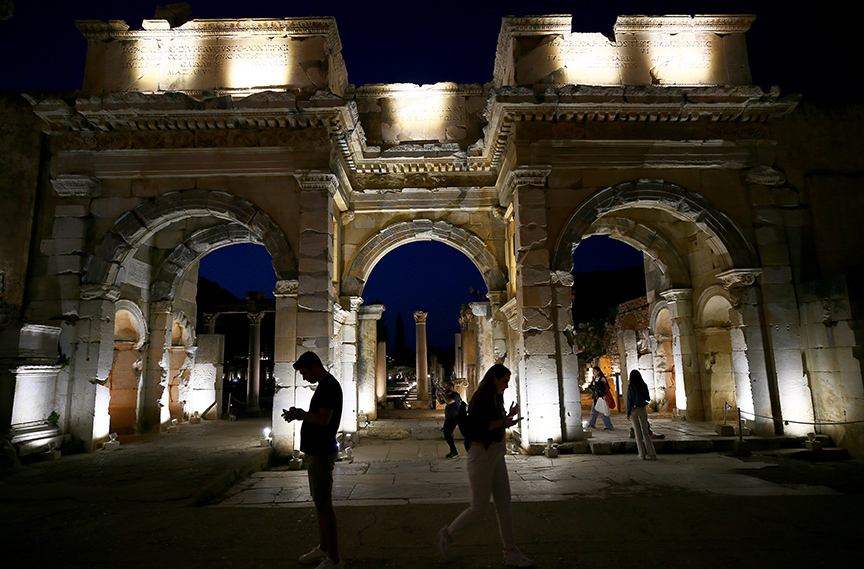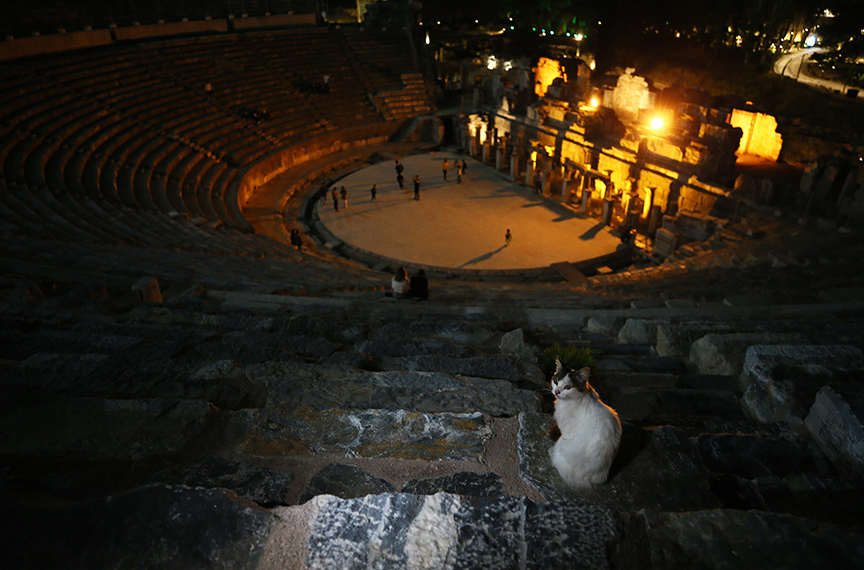
Night museology practice started in the ancient city of Ephesus
The ancient city of Ephesus, which is on the UNESCO World Heritage List, can be visited after sunset as of April 9 with the “Night Museology” application of the Ministry of Culture and Tourism.
The ancient city of Ephesus has a history dating back to the 10th century BC. It is known that the first settlements in the region belong to the Neolithic period. The city was colonized by the Greeks in the 8th century BC and became one of the most important cities of the Ionian Union. Ephesus was annexed to the Roman Empire in 129 BC and continued to develop during this period.

What makes Ephesus important is that it was the center of the cult of Artemis. Artemis was the goddess of fertility and hunting, and her temple was considered one of the Seven Wonders of the Ancient World.
The ancient city of Ephesus, which attracts hundreds of thousands of visitors every year, was illuminated with an LED lighting system within the scope of the night museology practice, which aims to enable tourists who prefer beaches during the day due to the high temperatures in the summer period to visit museums in the cool hours of the evening.
Within the scope of the application that started in Ephesus on April 9, visits can be made until 00:00 with the current entrance tariff.

In the illuminated ancient city, the Library of Celsus dating back to the 2nd century A.D., Agora Square, Kuretler Street, the Temple of Domitian, Trajan’s Fountain, the great ancient theater with a seating capacity of 25 thousand people, the stadium and the ancient harbor draw attention with the different ambiance created by the lighting.
The illuminated Library of Celsus, 21 meters wide and 17 meters high, impresses those who see it at night with its rich architectural decorations.
Cengiz Topal, Director of the Ephesus Museum, told AA correspondent that 2 million 163 thousand people visited the ancient city last year, “We had 395 thousand visitors in the first 4 months of last year, this year we have 495 thousand visitors in the same period. So we are going with an increase of 25 percent. My expectation for the number of visitors this year is an increase of around 550 thousand, and night museums will also contribute to this. With this increase, I think we will reach a year-end visitor number of around 2 million 550-600 thousand.”

Topal added that the new route created within the scope of night museology was determined as Aşağıkapı, Çamlı road, Liman Street, theater, marble street, Celsus Library, Yamaçevler and Hadrian Temple.
Cover Photo: AA
You may also like
- A 1700-year-old statue of Pan unearthed during the excavations at Polyeuktos in İstanbul
- The granary was found in the ancient city of Sebaste, founded by the first Roman emperor Augustus
- Donalar Kale Kapı Rock Tomb or Donalar Rock Tomb
- Theater emerges as works continue in ancient city of Perinthos
- Urartian King Argishti’s bronze shield revealed the name of an unknown country
- The religious center of Lycia, the ancient city of Letoon
- Who were the Luwians?
- A new study brings a fresh perspective on the Anatolian origin of the Indo-European languages
- Perhaps the oldest thermal treatment center in the world, which has been in continuous use for 2000 years -Basilica Therma Roman Bath or King’s Daughter-
- The largest synagogue of the ancient world, located in the ancient city of Sardis, is being restored











Leave a Reply